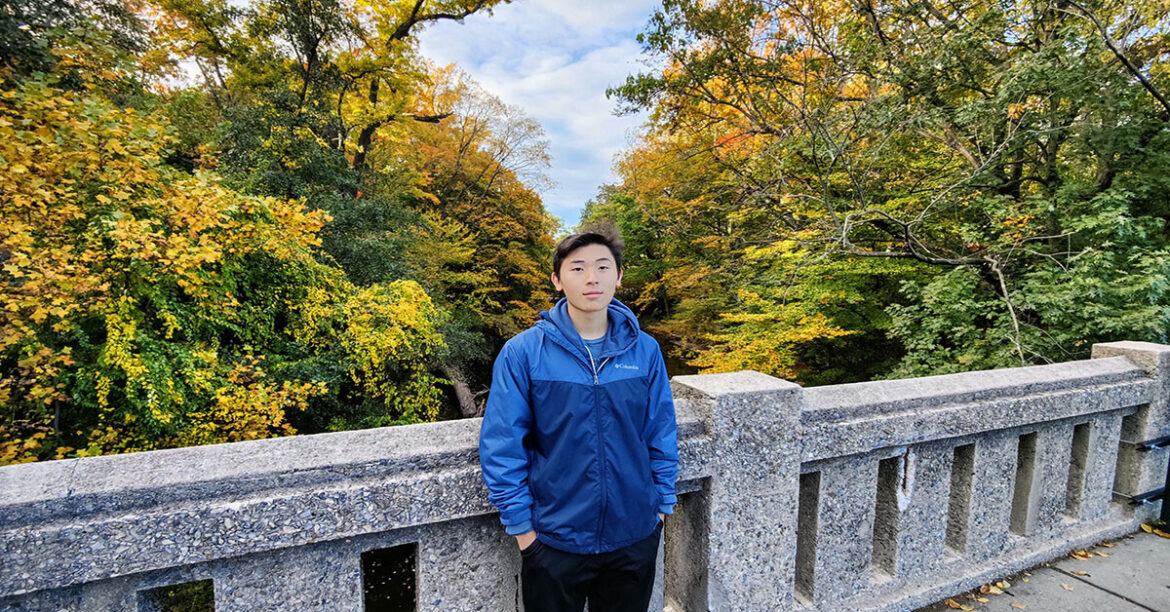Isabella Madrid, News Editor
@Imadridcourant
On January 24, senior Luke Huang was chosen as a top 40 national finalist in the 2024 Regeneron Science Talent Search. Each finalist received $25,000 and will compete for the top prize of $250,000.
Luke first learned about the competition earlier in his highschool career. “In 10th grade, I noticed a giant poster showcasing previous Regeneron STS winners in our science hallway,” said Luke.
Although the competition is only open to seniors, he knew that he was interested in pursuing research from that instant. “It opened my eyes to the world of high schoolers actively engaged in significant scientific research, and that’s what led me to start my own research project,” said Luke.
He drew inspiration for his topic of Binary Cellular Analysis from his connection with his grandparents. His project explored a central question about the severity of disease due to aging. “I wanted to know why diseases like heart disease and COVID-19 become deadlier as we get older, with our risk doubling every 8 years,” said Luke.
As people age, disease accounts for nearly two-thirds of all deaths, but the connection directly between aging and disease risks increasing is not quite understood. In his research he focused on a numerical design to better understand how the lifespan of a cell may explain this data. “I developed a mathematical model to explain how cellular aging might be driving this trend,” said Luke.
Luke received guidance and support from mentors Paul Reid and Professor James Michaelson during the extensive process. “I am immensely thankful for the guidance I received from my mentor, Professor James Michaelson, who provided essential papers and continuous feedback, as well as the support I’ve received from our school, especially Mr. Reid, whose enthusiasm for physics and science greatly inspired and fueled my own passion in these fields,” Luke said.
Luke also used other resources accessible to him like MIT’s OpenCourseWare catalog in order to further his understanding of specific scientific concepts while developing his model. The main idea of the model is to explore how the trend of disease risks can be connected back to a cellular level. “The model explains how increasing disease risks are tied to aging at a cellular level, which could help scientists develop more targeted anti-aging treatments,” said Luke.
In his model Luke also presented a prediction of mortality risks. “In addition, the model can predict mortality risks, which could help policymakers decide how to allocate health resources, such as vaccines, more effectively,” Luke said.
Luke has worked very hard on this project and is excited to be feeling the reward of his diligence. “After spending hundreds of hours on my research project, I was elated to hear that I was a Regeneron Science Talent Search finalist,” said Luke. “It’s incredibly fulfilling to apply my scientific skills to addressing real-world problems and I’m hopeful that this will inspire more students to pursue similar paths.”
Luke reflected on enjoyable moments of his research experience. “One of my favorite moments was learning about aging in general and realizing that there was so much we don’t understand,” said Luke. “Often, we oversimplify aging as just “old people die,” but it’s way more intricate than that. Did you know in some species, older individuals are just as likely, or even less likely, to die than when they were younger?”
The study of aging continued to pique Luke’s interest throughout the process. “Discovering that these basic questions remain complete mysteries has really fueled my excitement and curiosity about my research,” said Luke.




